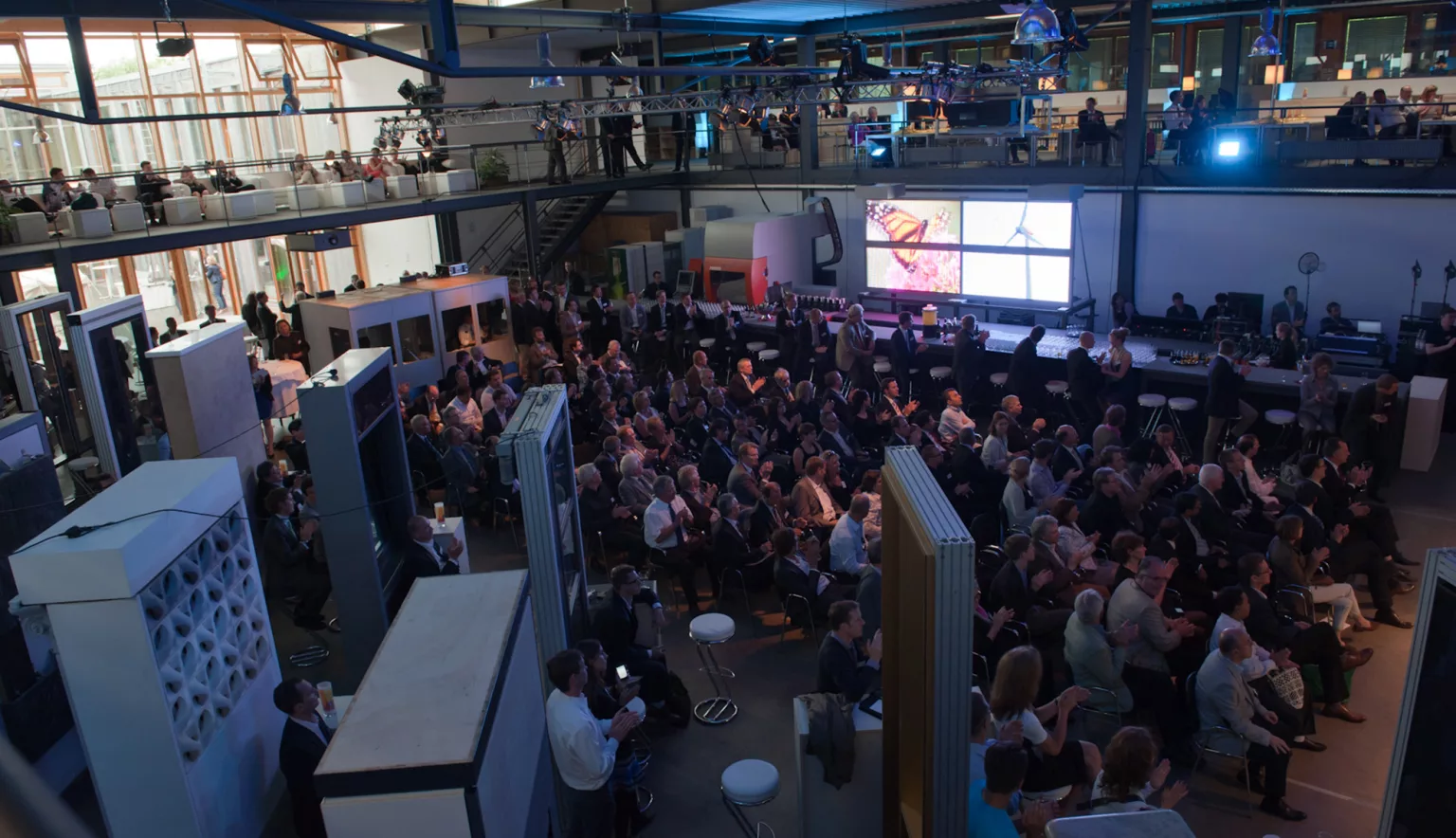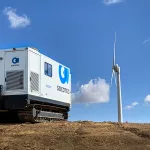Thanks to its specialised knowledge and commitment to research and development, Priedemann Facade Experts ensures that it lives up to its name.
CHALLENGING THE NORMS
A twisting glass skyscraper rises from the shimmering heat haze. The minarets of a gleaming white mosque pierce the skies. Curved concrete walls protect against the desert heat.
The Middle East is renowned for its contemporary architecture, which despite its futuristic appearance still incorporates elements of classic Islamic design – intricate geometric patterns, fortress-like walls and the architectural “iqtisad” or balance of its mosques. The façades are a fundamental aspect of these designs, for not only do they communicate style, they are integral in how much light, air and heat enters the building.
“We love challenging façade designs, parametric shapes, curved or just complicated forms and our clients are great in doing such designs,” says Micha Pawelka, Managing Director of Priedemann Facade Experts.
Priedemann is a façade consultancy firm that has been working in the Middle East for more than 14 years, led by Micha Pawelka and his partner Anees Backer.
“Our clients in the Middle East are primarily architects and multidisciplinary consultants, however, we also work for main contractors during the construction phase,” the Managing Director explains.
Despite a proliferation of design knowledge in the Middle Eastern markets, execution experience is in shorter supply.
“We partner with façade fabricators to provide them with a comprehensive execution engineering,” Micha continues. “This means we provide structural design, shop drawings and entire production and installation documents, including cast-in channel layout and machine files for their manufacturing. Our clients prefer us to do this, particularly when we already are on board from the design phase.”
MAKING WAVES IN THE MIDDLE EAST
Over the years, Priedemann has worked on a variety of landmark projects in the Middle East. It provided façade designs and consultancy for QP district in Doha in association with KEO International Consultants, façade of approximately 149,000 square metres for Etihad Towers (with ACC Arabian Construction Co as the main contractor).
The company is currently busy on multiple projects across Dubai, Oman, Saudi Arabia and Kuwait. It is working on the New Palace of Justice – which is intended to replace Kuwait’s central courthouse – for its client PACE.
“The project has a very high design quality and the façade is challenging because the entire superstructure has an intricate expansion joint, which also drives the façade system,” Micha explains. “Additionally, PACE designed some quite challenging features within the façade.”
Priedemann is also in the final stage of construction of ICD Brookfield Place Tower in Dubai International Financial Centre.
“We were on board since the very beginning of the façade engineering with Foster + Partners,” the Managing Director adds. “The quality approach of the client, ICD, and all the stakeholders make this project one with the best overall standards, not only in Dubai but the entire Middle East.”
It is apparent that Priedemann has a fantastic roster of clients, but when asked to choose one standout project, Micha brings up the Dubai Electricity and Water Authority’s new HQ, named Al Shera’a.
“It is designed to be the world’s largest zero energy building,” he tells us. “This means the building will generate its entire required power onsite with no grid connection, thanks to more than 20,000 square metres of photovoltaic solar panels, which are placed on the roof and integrated into the façade.
“It is geared to achieve a platinum rating from LEED, as it also intends to have a state-of-the-art building management and control system that will shut down unnecessary usage of lighting, cooling and water supply automatically.
“Priedemann’s engagement on this project is very special, in the sense that it epitomises our company’s full dedication towards innovation and sustainability.”
Indeed, Priedemann’s stellar portfolio corroborates this, as it’s full of projects where smart technology leads to savings in cost, materials and energy.
EXPERTISE AND UNDERSTANDING
In short, Priedemann has a lot to be proud about. But how does it manage to consistently pick up so many ground-breaking projects? In order to understand what makes the company stand out from the pack, Micha believes it’s necessary to go right back to the start.
“We are a German façade consultancy,” he states, “and it might be interesting to learn that the façade consultancy business originated in Germany in 1996, when this scope was extracted from the architectural discipline and brought into a separate discipline of its own.
“Priedemann Germany was founded in 1993 so we therefore have the façade consultancy roots deeply embedded into our DNA. The background of creating the façade consultancy business was the fact that facades started to get more and more complicated, and the construction industry realised the expertise of a specialised consultancy was required.”
In a world where businesses are becoming increasingly multi-specialised, expanding their reach into more and more fields, Priedemann stands out for doing the opposite.
“We do only façades, no superstructure, no MEP, and that is probably one of the biggest differences to other members of the market,” Micha affirms. “Many of them are multidisciplinary consultancies, where the façade became just an add-on later into their scope.
“We consider ourselves one of the biggest façade consultancy firms globally (probably even the biggest) focussing only on façades. We have a vast amount of expertise and knowledge, collected over 26 years working in Europe, more than 14 years in the Middle East and several years in other global regions such as China, Turkey, Africa, Russia, the UK, and the US.”
It’s no wonder that the company is in such high demand.
Priedemann’s practical, on-the-ground knowledge of both building techniques and local markets means it is ideally placed to provide consultancy services on, and deliver, façade projects across the globe.
For instance, more than 60 percent of its project managers are from execution backgrounds, having worked with multiple fabricators of all kinds. This means they know how to execute and how to build, adding a practical edge to the company’s approach.
“We know and can navigate our way within the local and international fabricators’ markets,” Micha adds. “We understand pricing, capabilities, strengths, and weaknesses. Looking into the competition on the market, we see significant gaps in knowledge, experience, and quality – something we will never and cannot entertain with the ingrained quality of Priedemann.”
The MD is aware, however, that high quality cannot be maintained in isolation.
“We acknowledge that the strong cooperation and relationships we have with our multitude of vendors, suppliers and other business partners is also part of the key to our ongoing success,” he continues.
Indeed, Priedemann’s interpretation of “partners” goes even further, since it does not only cooperate with the direct supplier, but also with the majority of the façade system players and even with universities and other R&D institutions.
And the company’s own staff is another key to its success. It places high importance on attracting, retaining and developing talent from across the globe, aware that the contribution of its workforce is integral to its collective expertise.
“We support and put great emphasis on education and continued professional development, growing leaders within our firm so that we can ensure a sustainable talent pipeline for the years ahead,” Micha says. “Through our participation in façade events, workshops, university programmes and related exhibitions in the industry, we strengthen and widen our reach to a much wider network of engineers, architects, designers and other seasoned professionals.
“While technical background is important and façade background is preferred, it is equally if not more important that a candidate fits the values, the spirit and the ethics of the family as we want everybody to be with us until retirement.”
GETTING TECHNICAL
Another reason for Priedemann’s success is its embrace of technology, digitisation and parametric design; something which it has been working with for over a decade.
“Our research focus is on intelligent façade engineering, or IFE,” explains Micha. “This is a virtual, integrated procedure for optimised designing, accomplishing and management of façade constructions in accordance with the method of BIM.
“In order to do this, all relevant information is put into a digital database and linked up as a virtual component-orientated 3D-façade model.
The primary function of the parametric volume model is to generate data for detailed design and construction documentation, and to order lists of material integrating with controlling CNC-manufacturing automates.”
Priedemann is committed to collaborating with partners and investing in software and human capital in order to continue innovating within the industry.
Thanks to its commitment to innovation and knowledge, Micha is optimistic about Priedemann’s future, despite the recent COVID-19 outbreak. He concludes the interview by outlining the company’s plans for 2020 and beyond.
“Since the refurbishment of façades will be an important requirement in the future, we are currently working in this field,” he says. “Also on our task list are further collaborations in the US, Australasia as well as in Russia, where we already have increased our footprint.”
























